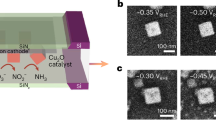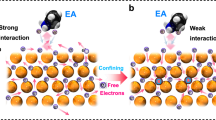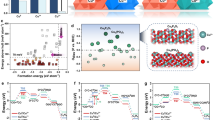Abstract
IN a note on the production of electrolytic copper, on p. 371 of NATURE of February 15, it is stated that “Mr. S. Cowper-Coles has hit upon anew plan, in which the copper is deposited on a vertical mandril, which is caused to rotate at a very rapid rate..... As a consequence, a smooth and dense deposit has been obtained with current densities approaching 200 ampères per square foot.” In reference to this I should like to point out that the idea of rotating the kathode with a view to obtaining greater rates of disposition is an old one. We have had in use at the Owens College for the last seven years a copper depositing tank in which the kathode consists of a vertical mandril 9 inches long and 3 inches diameter kept in rapid rotation, and capable of receiving a good copper deposit with a current of 100 ampères. The arrangement was devised by Mr. Henry Wilde, F.R.S., to illustrate the working of his patent, No. 4515, of 1875, and differs little from that used by Mr. Cowper-Coles. The mandril is driven from above, so that a stuffing-box in the bottom of the tank is unnecessary.
This is a preview of subscription content, access via your institution
Access options
Subscribe to this journal
Receive 51 print issues and online access
$199.00 per year
only $3.90 per issue
Buy this article
- Purchase on SpringerLink
- Instant access to full article PDF
Prices may be subject to local taxes which are calculated during checkout
Similar content being viewed by others
Author information
Authors and Affiliations
Rights and permissions
About this article
Cite this article
LEES, C. The Production of Electrolytic Copper. Nature 61, 392 (1900). https://doi.org/10.1038/061392b0
Issue date:
DOI: https://doi.org/10.1038/061392b0



